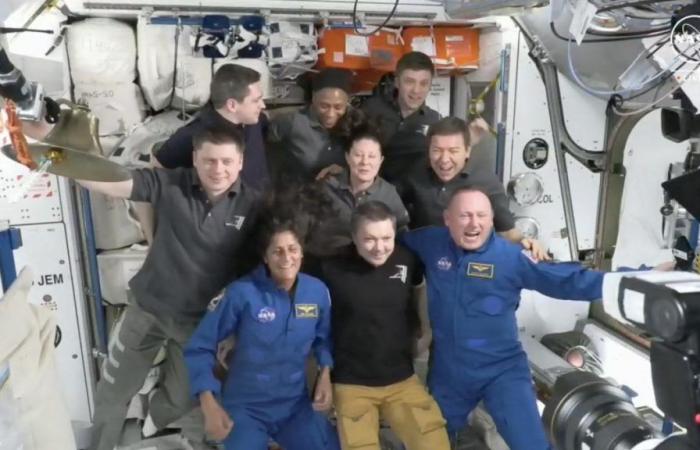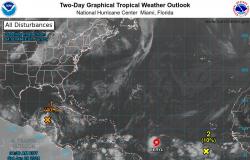Astronauts’ return date remains uncertain Barry ‘Butch’ Wilmore and Sunita ‘Suni’ Williamswho arrived at the International Space Station (ISS) 20 days ago on board the ship Starlinerfrom the company Boeing.
What was going to be a week-long stay has now come to an indefinite end due to several delays due to helium leaks in the capsule, which represented the American company’s bid to become a permanent supplier to NASA for its flights to the ISS.
According to the EFE news agency, the specialized media speak of a “stranded”, “trapped” mission, of the possibility of a change of mission to a rescue one, and of the idea that it is a SpaceX Dragon capsule the alternative to returning the two astronauts, which would be embarrassing for Boeing.
At the moment the astronauts are not at risk. According to NASA, these can remain for several weeks and take advantage of the time for federal agency investigations.
However, the space agency’s silence in recent days on the matter and the lack of a date, even a tentative one, for the return has been criticized – the last one that was known was this Wednesday, June 26 and a window for the July 2 – has given rise to speculation.
This image courtesy of Maxar Technologies, taken on June 7, 2024, shows the Boeing Starliner spacecraft docked at the forward port of the International Space Station (ISS) in the station’s Harmony module. A Boeing Starliner capsule carrying the first astronauts in its history docked with the International Space Station on June 6, 2024, after overcoming unexpected problems resulting from propellant and helium failures.
Photo:AFP
The failures
As the professor of aerospace engineering at the University of Antioquia, Juan Francisco Puerta, explained to EL TIEMPO, problems have been a constant for Boeing since the unmanned tests of the Starliner, in which the on-board clock failed, which led to in the failure of the mission. While recent capsule failures (helium leaks) have been attributed to factors related to its propulsion.
“This is a very important issue to be able to return, because the propellant is what gives orientation to the ship to make the entry maneuvers in the correct direction against the atmosphere and allow the ship to make a re-entry towards the protective shields. If the ship tilts very slightly, it goes almost above the atmosphere when entering and what it would do is bounce. If it arrives at a very steep entrance, it requires additional procedures where propulsion is necessary,” says engineer Puerta.
He also points out that these failures in these systems had occurred before the Starliner took off. The launch from Florida (USA) had been postponed almost a year from its initial date and in the days before takeoff a helium leak was found. The ship, however, took flight from a platform at the Cape Canaveral Space Force Station on June 5 and the next day it was already embedded in the Harmony module of the ISS, but with new helium leaks.
“This was corrected at launch but it is a very important risk to take into account because the ship must be guided in the re-entry process and be successful for the crew to survive,” says Puerta.
Boeing’s bad hour
Boeing’s problems with the Starliner ship add to the bad moment that the company is going through due to a cascade of technical problems in its commercial aircraft that have caused serious damage to its reputation..
Furthermore, in recent days federal prosecutors have recommended that the United States Department of Justice take action against the company for failing to comply with an agreement reached in 2021 to compensate the families of the victims of two plane accidents in 2018 and 2019, which caused death. of 346 passengers.
According to experts in the aerospace field such as Professor Puerta, the company seems to be developing a bad reputation around delays and failure to comply with schedules caused by carelessness in control and adjustment processes.
“It is something that is already becoming a recurring theme in the company, where they are going to have to make more radical adjustments to their design procedures for these space systems,” Puerta considers.
The Boeing CST-100 Starliner spacecraft.
Photo:EFE/NASA
For example, the first manned mission of the Starliner (which in May 2022 successfully completed an uncrewed trip to the ISS) should have taken off in July 2023, but a month before the managers announced the indefinite postponement of takeoff to be able to solve the ship’s parachute system.
The mission was also originally planned for 2017, but since then it has suffered a series of delays that cost the US space agency some $4.2 billion.
With the mission, Boeing hopes to obtain the necessary certifications to operate as a second provider of cargo and crew transportation to the ISS, as SpaceX already does after million-dollar contracts that both private firms have signed with NASA. Now, the delay in the mission’s return is going through the space agency’s process for certification toward the end of this year.
If obtained, Boeing plans to make its first operational trip to the ISS in February 2025. Meanwhile, Elon Musk’s SpaceX, since May 2020, has made 13 manned space trips in its Dragon capsule, including four for commercial customers, and twelve of which have been to the ISS. In all of them it has transported 50 people, including astronauts, cosmonauts and private citizens.
SCIENCE EDITING
*With information from EFE






